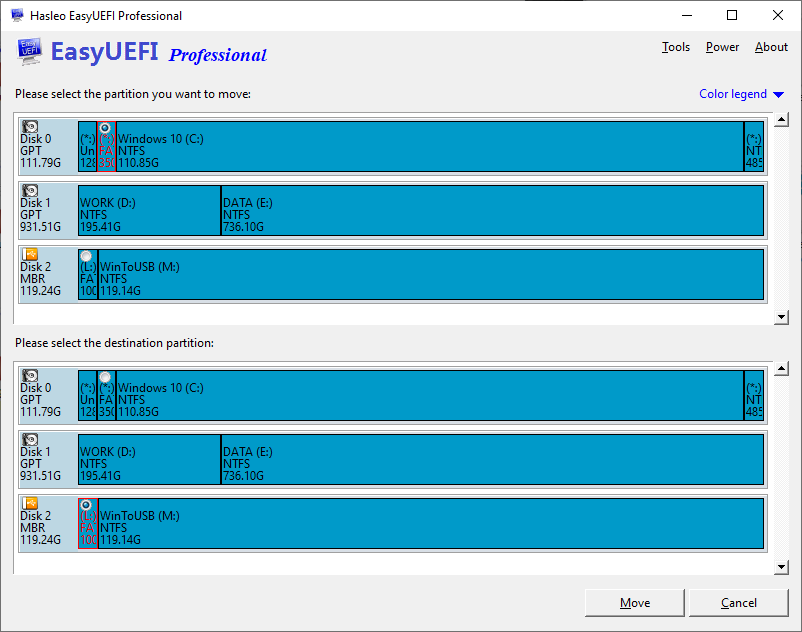


If you don't care if the partition gets changed from sda1 to sda4, you can create the new partition and copy over the data straight away. ¹ Deleting it before recreating it only serves to keep the partition number the same.

#HOW TO CHANGE EFI SYSTEM PARTITION WINDOWS#
That should be much faster than moving around multiple large filesystems (which involves more than just moving the first few MB to the end of the partition, since the filesystem on the partition has to stay consistent).īesides, I'm not sure if Windows likes having "Microsoft reserved" partitions moved around: partitions like that are often used for "revert to factory defaults" features and have their partition number and/or position hardcoded somewhere. With prior experience or a good tutorial, that's done in five to ten minutes. The exact commands depend on the distribution you're using, but you'll usually boot a live CD/USB of your distro, mount your partitions in a chroot environment, and run grub-install /dev/. Since this is the /boot partition containing your kernel, you'll need to make its new position known to the bootloader (usually GRUB) afterwards. change the mount information in /etc/fstab (since you just replaced the partition UUID with a new one),.recreate it in one of the larger empty spots (e.g.The HP EFI partition is viewable on the hard drive and is labeled as HPTOOLS. Along with replacing the traditional BIOS interface, the HP version of the EFI partition adds tools to the preboot system environment. Since it's a Linux-compatible partition with relatively little data and you have a few larger empty spots in your partition layout, I'd suggest you just Tapping into this technology, HP has implemented an EFI partition on all of its commercial notebook computers.


 0 kommentar(er)
0 kommentar(er)
